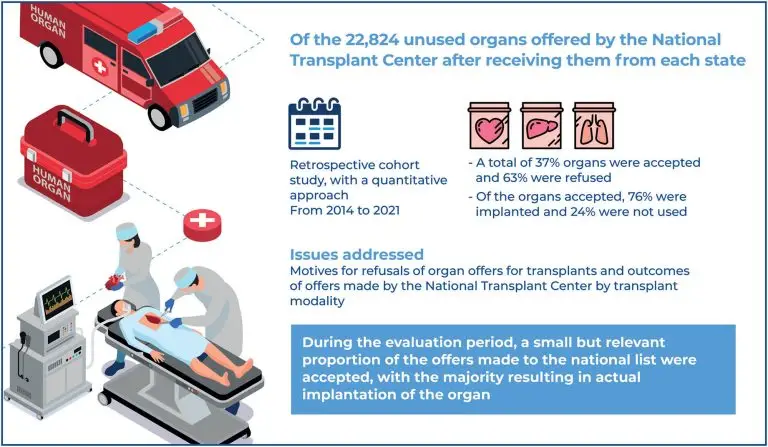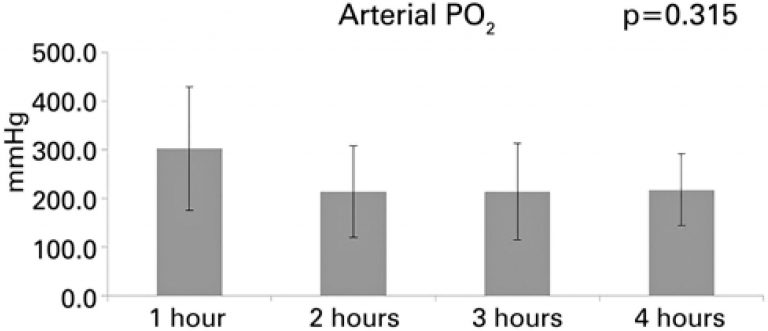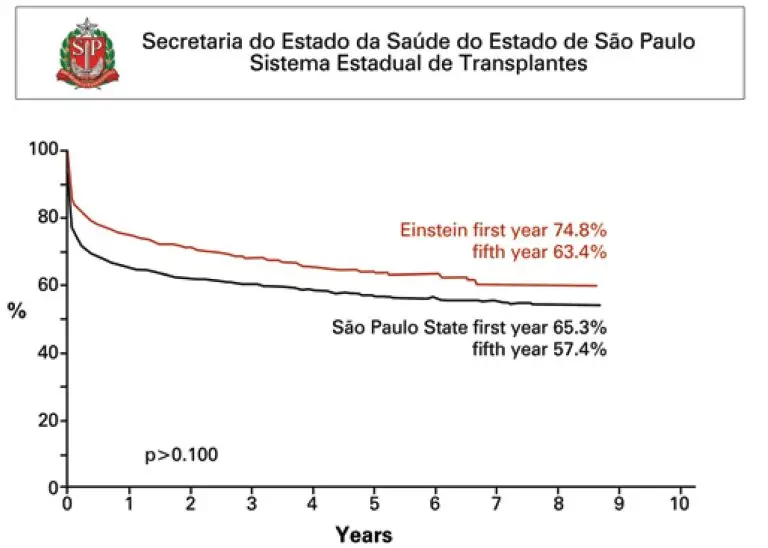30/Jul/2025
Analysis of outcomes and reasons for refusing organs offered by the National Transplant Center
DOI: 10.31744/einstein_journal/2025AO1598
Highlights ■ Logistical factors were not responsible for most organ rejections in the single national waiting list. ■ Refusal information was operator dependent, as the reason for refusal was generic in most cases. ■ It is possible to increase the use of organs offered to the National Transplant Center by converting more offers into transplants performed through a more detailed study of the reasons for refusal. ABSTRACT Objective: To investigate the outcomes and reasons for the refusal of organs offered […]
Keywords: Organ preservation; Organ transplantation; Refusal to participate; Tissue and organ procurement; Transplantation; Waiting lists
22/Nov/2021
Disposal of donor livers in Brazil: how to optimize their utilization rate in transplants?
DOI: 10.31744/einstein_journal/2021AO6770
ABSTRACT Objective: To understand the professionals´ perception of the use of deceased donor liver for transplantation, the reasons to decline them, and propose strategies to increase their use safely. Methods: This is a cross-sectional, descriptive qualitative-quantitative study. Professionals working with liver transplantation answered a self-administered, structured, and electronic questionnaire comprising 17 questions distributed into four sessions (demographic factors, perception of use of organs, reasons for disposal, and measures to favor their usage). Results: A total of 42 professionals participated in […]
Keywords: Liver transplantation; Organ preservation; Perfusion/methods; Tissue and organ procurement
10/Jul/2019
Evaluation and reconditioning of donor organs for transplantation through ex vivo lung perfusion
DOI: 10.31744/einstein_journal/2019AO4288
ABSTRACT Objective: To assess the feasibility and impact of ex vivo lung perfusion with hyperoncotic solution (Steen Solution™) in the utilization of these organs in Brazil. Methods: In this prospective study, we subjected five lungs considered to be high risk for transplantation to 4 hours of ex vivo lung perfusion, with evaluation of oxygenation capacity. High-risk donor lungs were defined by specific criteria, including inflammatory infiltrates, pulmonary edema and partial pressure of arterial oxygen less than 300mmHg (inspired oxygen fraction […]
Keywords: Brain death; Lung transplantation; Organ preservation
01/Jan/2015
Liver transplantation: history, outcomes and perspectives
DOI: 10.1590/S1679-45082015RW3164
In 1958 Francis Moore described the orthotopic liver transplantation technique in dogs. In 1963, Starzl et al. performed the first liver transplantation. In the first five liver transplantations no patient survived more than 23 days. In 1967, stimulated by Calne who used antilymphocytic serum, Starzl began a successful series of liver transplantation. Until 1977, 200 liver transplantations were performed in the world. In that period, technical problems were overcome. Roy Calne, in 1979, used the first time cyclosporine in two […]
Keywords: Brazil; Immunosuppression; Liver cirrhosis; Liver transplantation/history; Organ preservation; Tissue and organ procurement; Tissue donors





